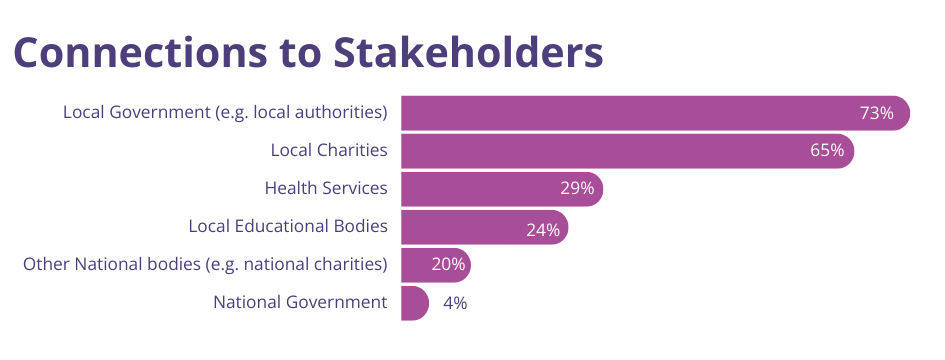Section 7 - A Summary of how Community Transport engages in Policy
It is more important than ever to engage with key stakeholders and get involved in policy discussions. We’ve seen in the previous sections that while the Community Transport sector delivers a variety of vital services to a wide range of passengers, the sector does face considerable challenges.

The three main policy priorities set out in responses reflect the challenges set out elsewhere in this report: recruitment of staff and volunteers is huge issue potentially limiting the capacity of the sector, funding is vital for operational costs and sustainable funding is vital for planning, whilst vehicles need replacing to ensure reliable services, comfort and accessibility for passengers, and to limit emissions from the fleet.

Crucially, responses show half of CTO do not feel connected to local transport decision making. Improving this connection is crucial, both to the sector and for transport planners themselves. Most are in contact with local authorities, suggesting that they do not feel that their voice is heard.
It is vital that the role played by the sector in the provision of non-commercial, accessible services is recognised and operators are supported to continue their operations. CTA’s policy programme will work to ensure that the connections between Community Transport and central, regional and local government are strengthened and new relationships with health authorities can flourish.

